Easy to make Orange Marmalade
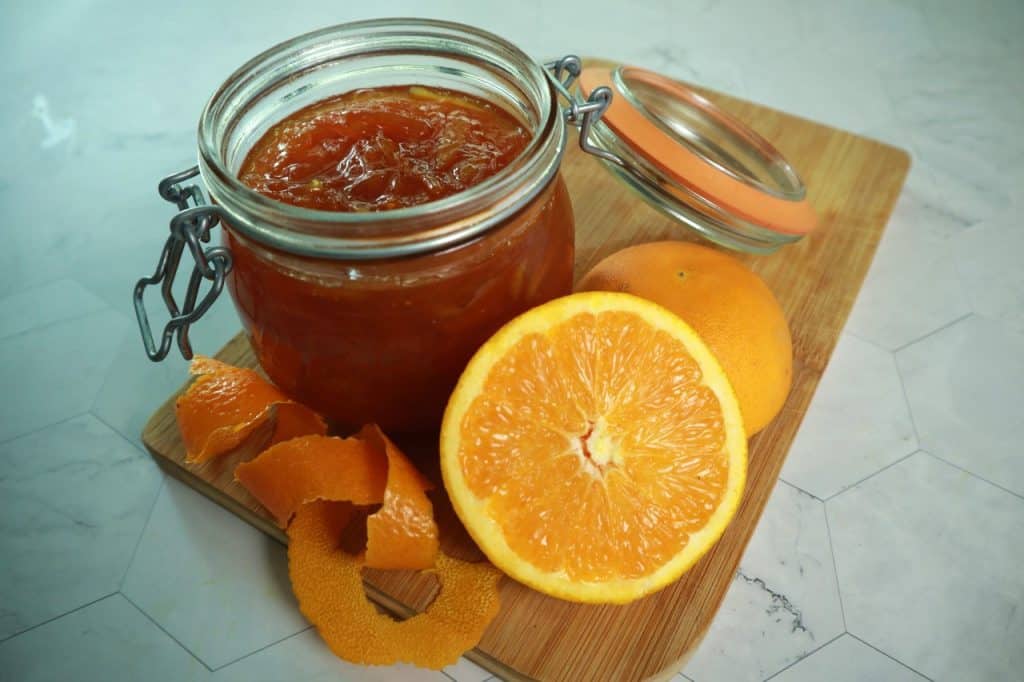
Orange marmalade, or the more exotically named French marmelade d’orange, is sweet but slightly bitter as well as sticky but perfectly spreadable. Perfect for breakfast, desserts or high tea, this foolproof marmalade recipe is the perfect way to preserve oranges.
What is the difference between orange jam and marmalade?
Both are prepared with oranges, but where jam is a mixture of juice and orange segments, marmalade also has the addition of the zest or peels of the oranges which adds bitterness. The most difficult part of making marmalade is finding the perfect balance between the sourness, sweetness and bitterness.
In general, jam can be made with any fruit whereas marmalade is always made from citrus fruits.
How much sugar is required for marmalade?
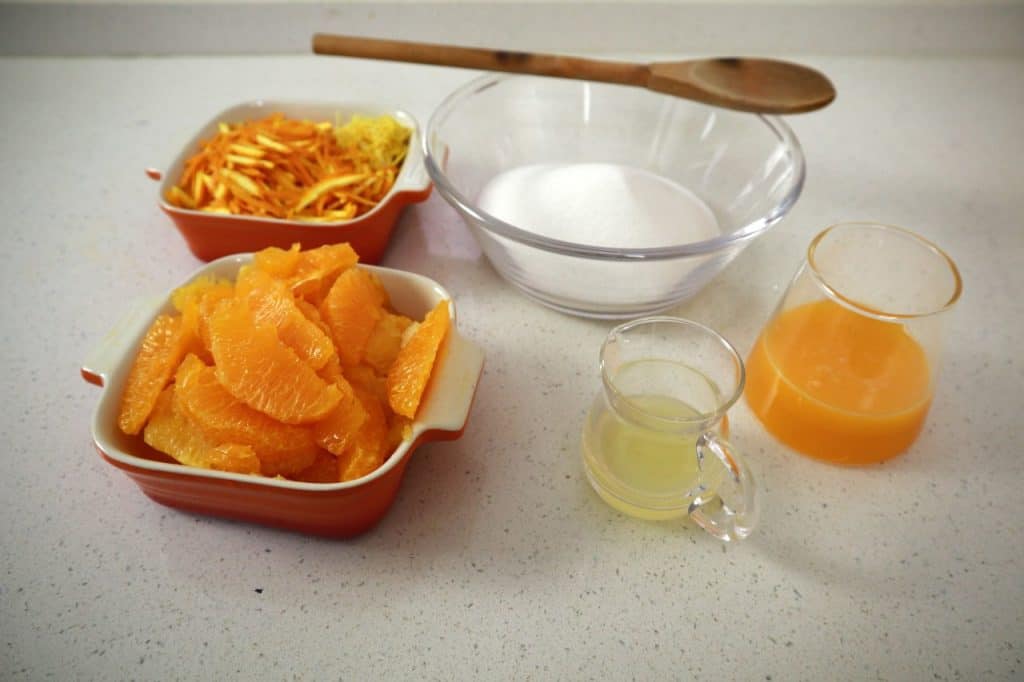
The ratio of sugar for a marmalade is very close to 1:1, and although this sounds like a lot of sugar, it is necessary to balance the bitterness of the orange peels and it also contributes to the perfect texture. Reducing the sugar is possible but the marmalade will be runnier and not have the consistency of an ordinary marmalade.
What are the best oranges for marmalade?
Seville oranges naturally contain a lot of pectin and are intense in flavour. You can substitute them with a mixture of oranges and other citrus fruits such as lemon, grapefruit or lime.
It is preferable to purchase organic citrus fruits because they are free of pesticides and chemical wax. If the fruit is not organic, it’s best to blanch them before using the peel in your recipes.
Use of pectin
Citrus fruit naturally contains pectin in the peel, membranes and seeds. Adding commercial pectin is only required if the jam is too runny. The quantity of pectin can change according to your personal preference. A high pectin content will make the jam more solid.
Assess the texture
If you have a food thermometer, 104°C is the perfect temperature to cook jam and marmalade.
There is a manual way to evaluate the doneness of your jam. Before you start cooking, place a small plate in the freezer. Once your jam is cooked, spoon a small amount of the jam onto the chilled plate. The jam cools quickly and thickens almost instantly. Use your fingertip to press into the jam. When it’s cooked right, you should see the surface wrinkle. If it doesn’t, simmer the jam for another 5 to 10 minutes.
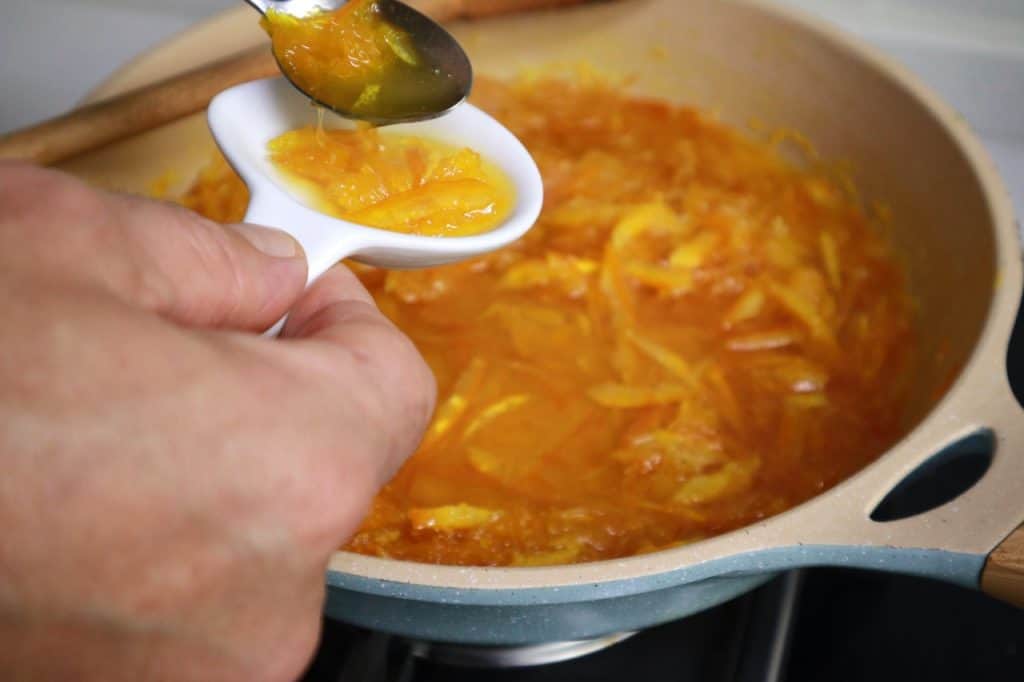
Related: Chunky cherry jam
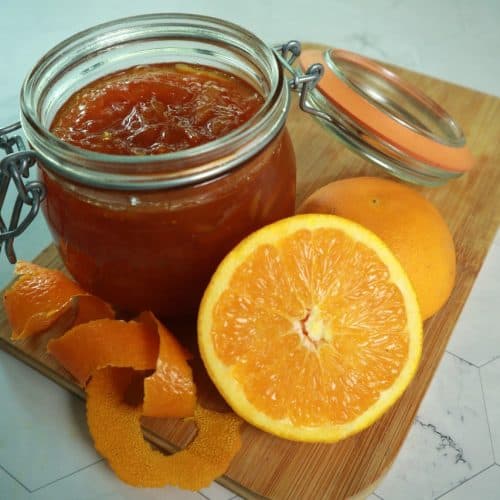
Orange marmalade
EQUIPMENT (click pictures for details)
Ingredients
- 1 kg oranges
- 750 gr -1 kg caster sugar
- 250 ml orange juice
- 1 lemon juice + zest
- 200 gr orange peels julienned
Instructions
Macerate the fruit
- Peel the oranges and cut all the segments. Keep the peels aside.
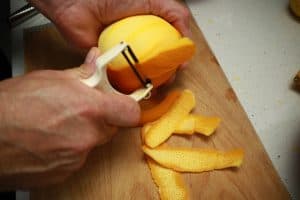
- Squeeze the juice of the white membranes before discarding.
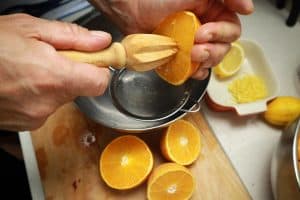
- Weigh the orange segments and add the same amount of sugar. Let the combination of the orange segments and sugar macerate for 1 hour.
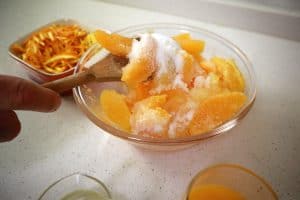
Prepare the peels
- Remove the white membranes from the orange skins, this part is extremely bitter, then cut the orange peels into small strips (julienne).
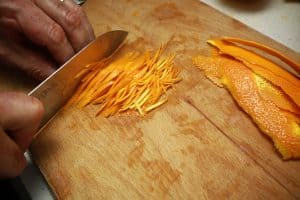
Cook the marmalade
- Place the macerated orange segments in a large cooking pot with the orange and lemon juice.
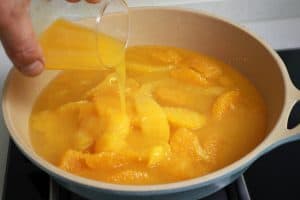
- Bring the mixture to the boil and reduce the heat to a simmering point. Remove the impurities off the surface and cook for 5 minutes.
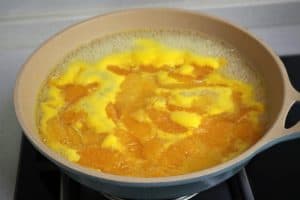
- Add the orange and lemon zest and continue cooking until the temperature reaches 104°C, stirring occasionally.

- Assess the structure of the marmalade and store it in an airtight jar in the refrigerator.
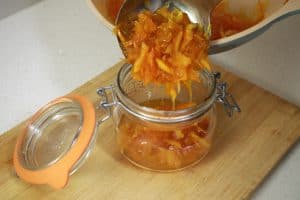
Notes
- Do not overcook the marmalade because the sugar will caramelise and the peels may burn easily.
- Do not rush or cook at too high temperatures.
- The temperature to cook the marmalade should be between 102°C up to 105°C (217°F to 222°F)



I just received lots of oranges. Will try this recipe, it looks good and not too sweet.
Hi Justine, thanks for your comment. You can always adjust the amount of sugar but be aware that the bitterness will stand out more.